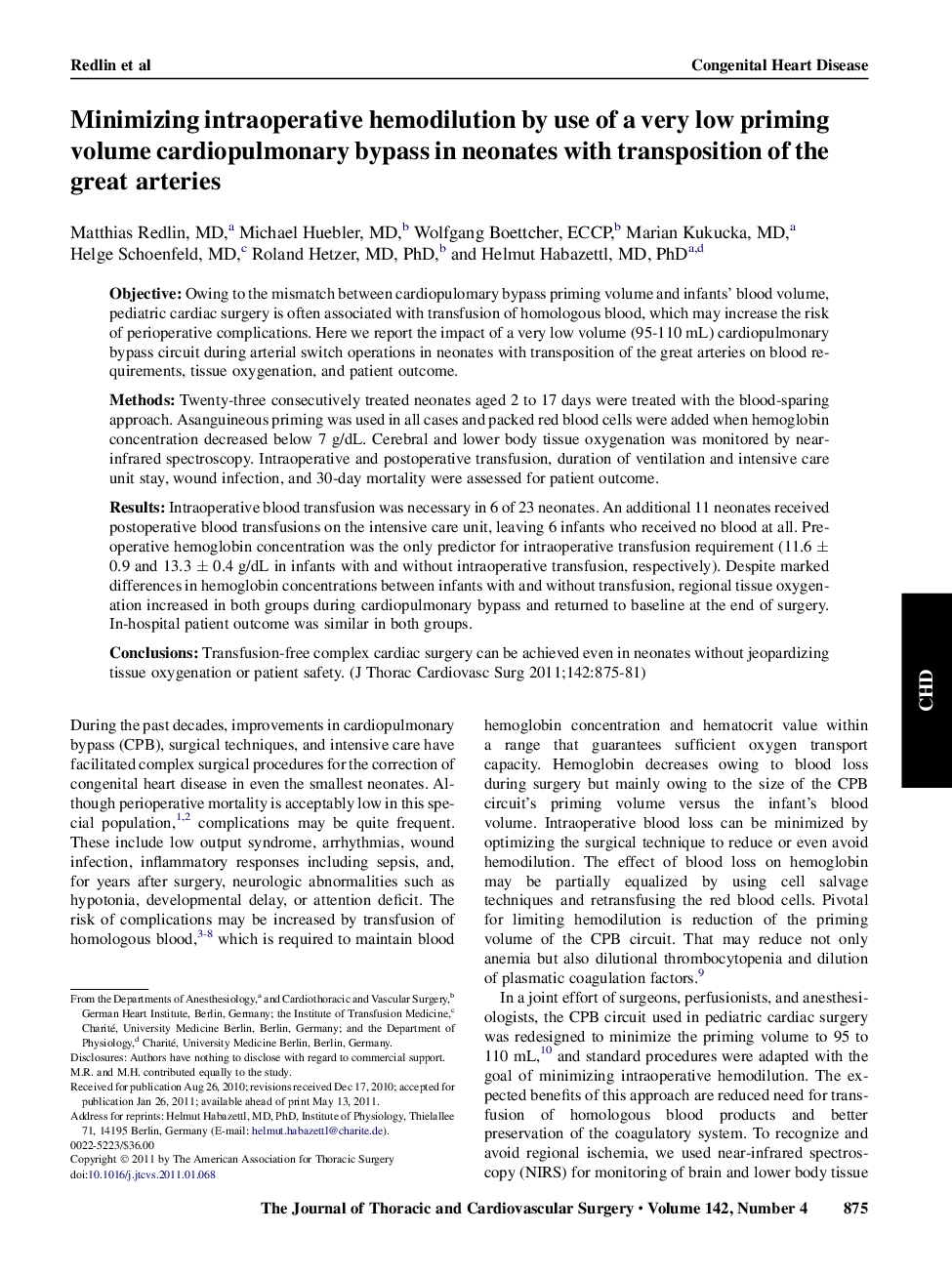| Article ID | Journal | Published Year | Pages | File Type |
|---|---|---|---|---|
| 2981873 | The Journal of Thoracic and Cardiovascular Surgery | 2011 | 7 Pages |
ObjectiveOwing to the mismatch between cardiopulomary bypass priming volume and infants’ blood volume, pediatric cardiac surgery is often associated with transfusion of homologous blood, which may increase the risk of perioperative complications. Here we report the impact of a very low volume (95-110 mL) cardiopulmonary bypass circuit during arterial switch operations in neonates with transposition of the great arteries on blood requirements, tissue oxygenation, and patient outcome.MethodsTwenty-three consecutively treated neonates aged 2 to 17 days were treated with the blood-sparing approach. Asanguineous priming was used in all cases and packed red blood cells were added when hemoglobin concentration decreased below 7 g/dL. Cerebral and lower body tissue oxygenation was monitored by near-infrared spectroscopy. Intraoperative and postoperative transfusion, duration of ventilation and intensive care unit stay, wound infection, and 30-day mortality were assessed for patient outcome.ResultsIntraoperative blood transfusion was necessary in 6 of 23 neonates. An additional 11 neonates received postoperative blood transfusions on the intensive care unit, leaving 6 infants who received no blood at all. Preoperative hemoglobin concentration was the only predictor for intraoperative transfusion requirement (11.6 ± 0.9 and 13.3 ± 0.4 g/dL in infants with and without intraoperative transfusion, respectively). Despite marked differences in hemoglobin concentrations between infants with and without transfusion, regional tissue oxygenation increased in both groups during cardiopulmonary bypass and returned to baseline at the end of surgery. In-hospital patient outcome was similar in both groups.ConclusionsTransfusion-free complex cardiac surgery can be achieved even in neonates without jeopardizing tissue oxygenation or patient safety.
